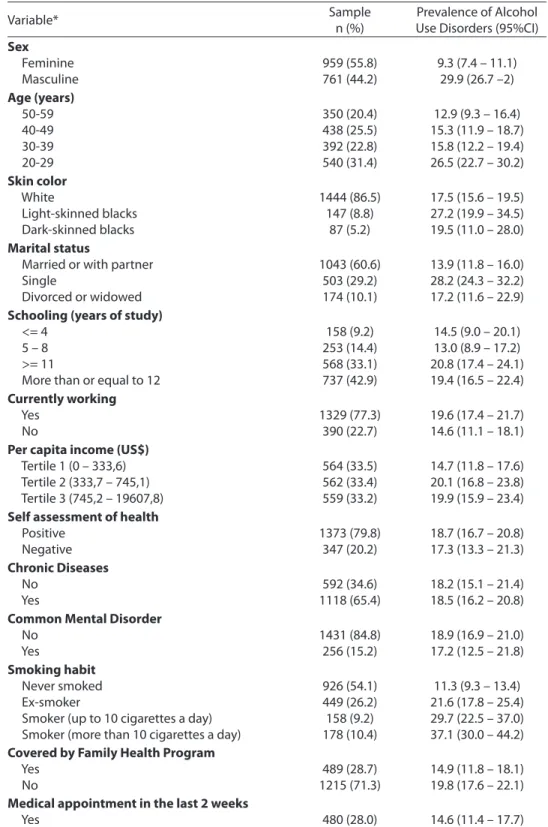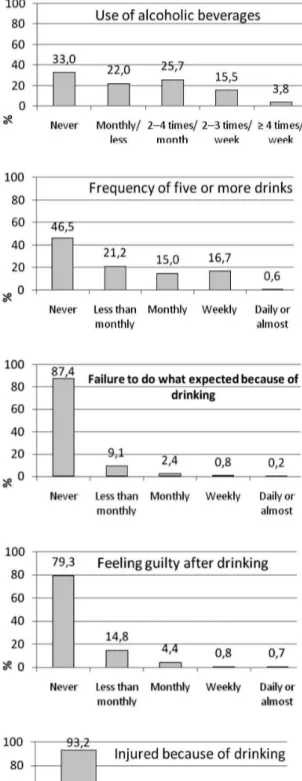Rev. bras. epidemiol. vol.15 número3
Texto
Imagem



Documentos relacionados
Other findings include lower CO scores in participants with alcohol dependence and cocaine abuse; lower SD scores among those with cocaine abuse and dependence and those with
Within this context, the aim of this study is to evaluate the prevalence of alcohol abuse and/or dependence in a population-based sample of young adults and ascertain the prevalence
Prevalence and associated factors of self-medication in adults living in the Federal District, Brazil: a cross-sectional, population-based study... in adults living in the
The frequency of alcohol abuse and driving motor vehicle after intake any amount of alcohol was higher in young adults (Table 2).. Table 1 - Prevalence and prevalence ratio
Conclusions: This study showed a high prevalence of overweight and obesity associated with modiiable risk factors such as physical inactivity, alcohol
ers and identify sociodemographic factors associat- ed with the different facets of alcohol consumption (frequency, typical quantity, binge drinking, and
The aim of the present study was to evalu- ate the prevalence of binge drinking and its as- sociation with socioeconomic factors and social capital among adolescents in the city
Objective: The present study aims to evaluate the prevalence of and factors associated with the use of tobacco and alcohol among elderly people living in the northern part of